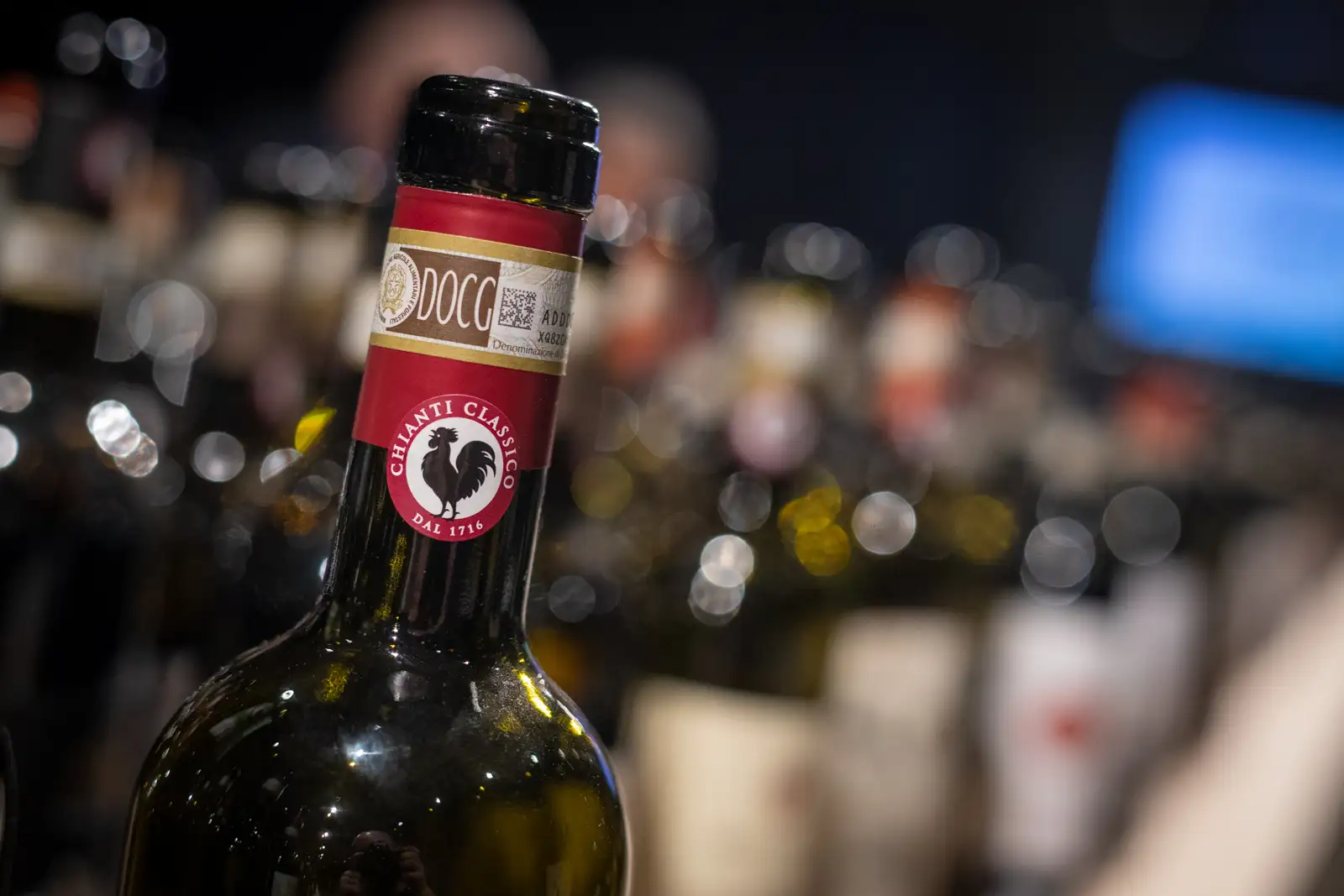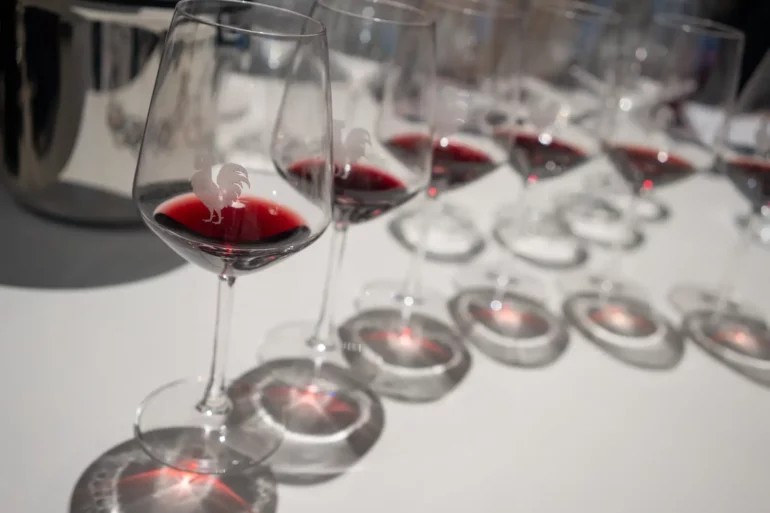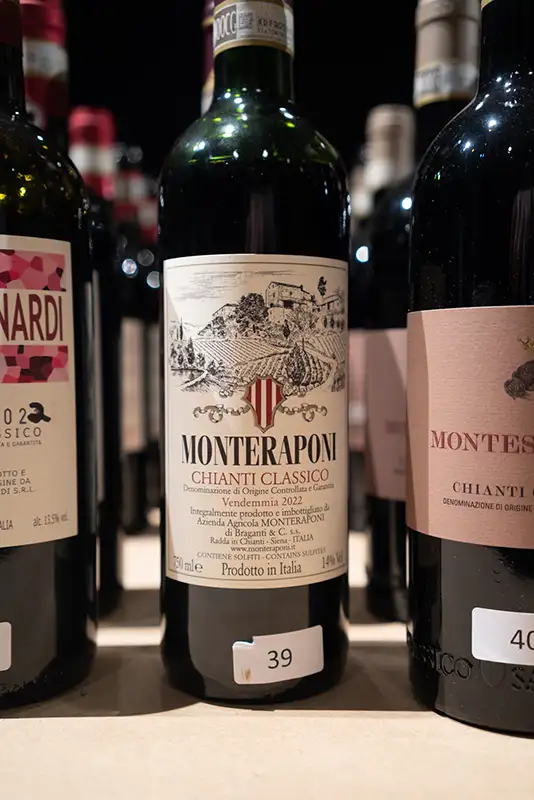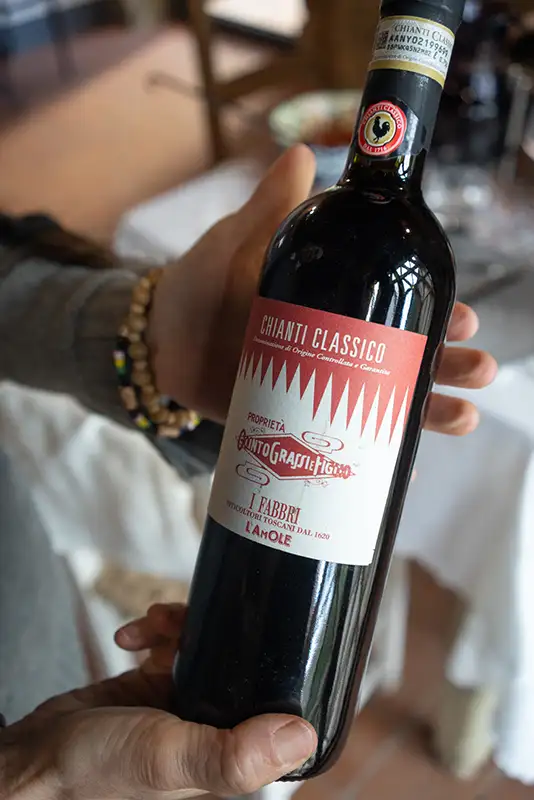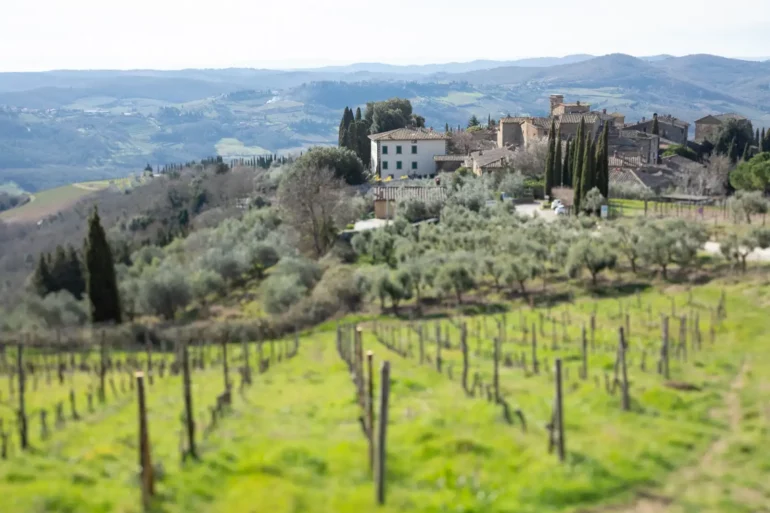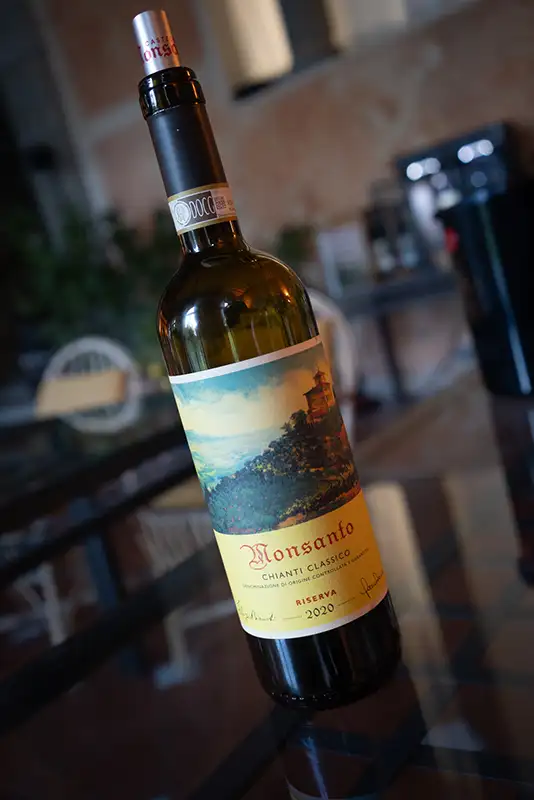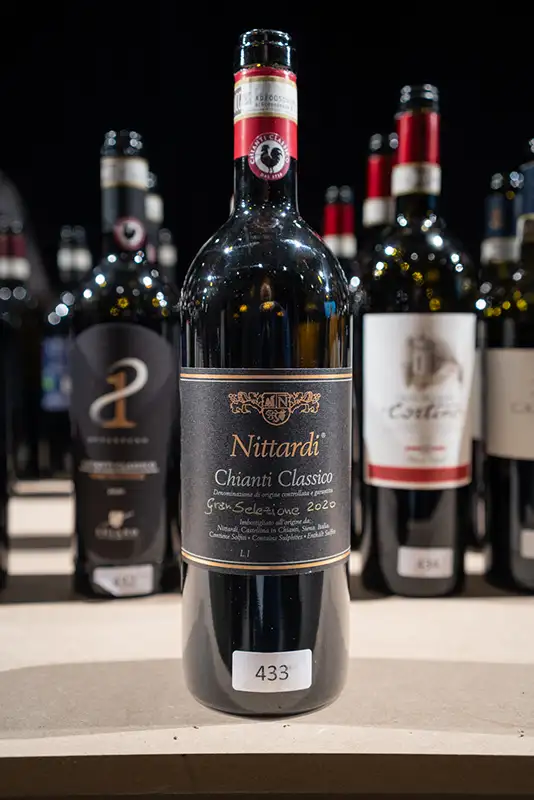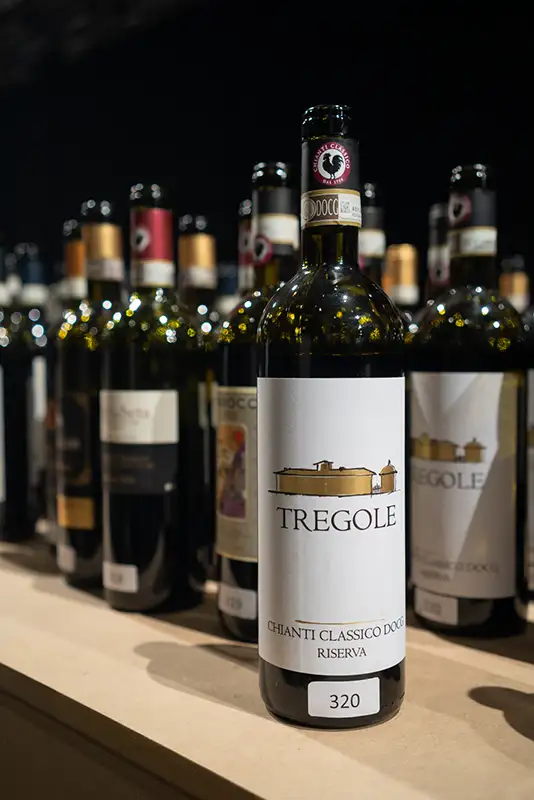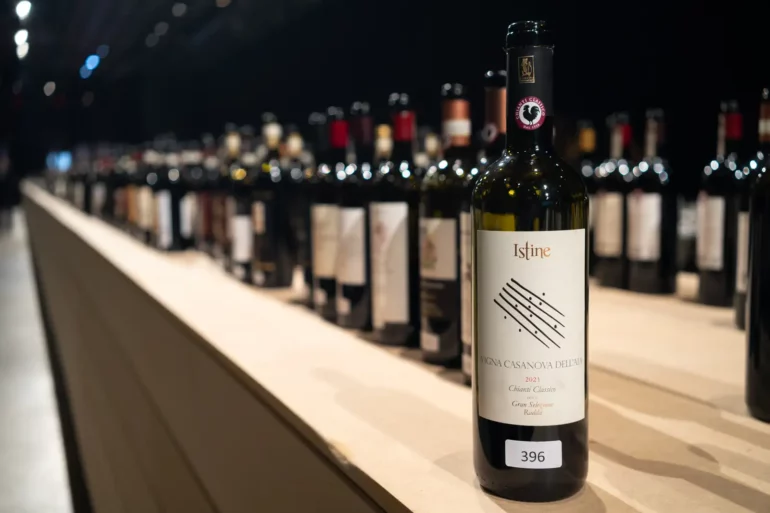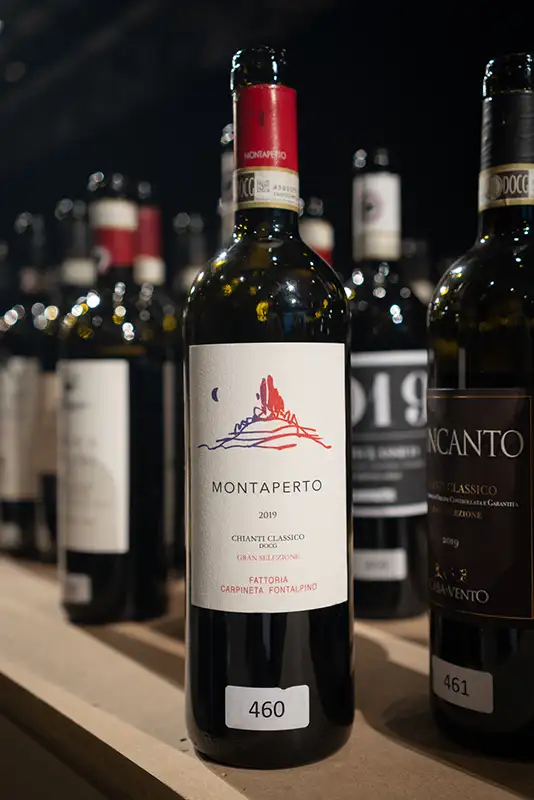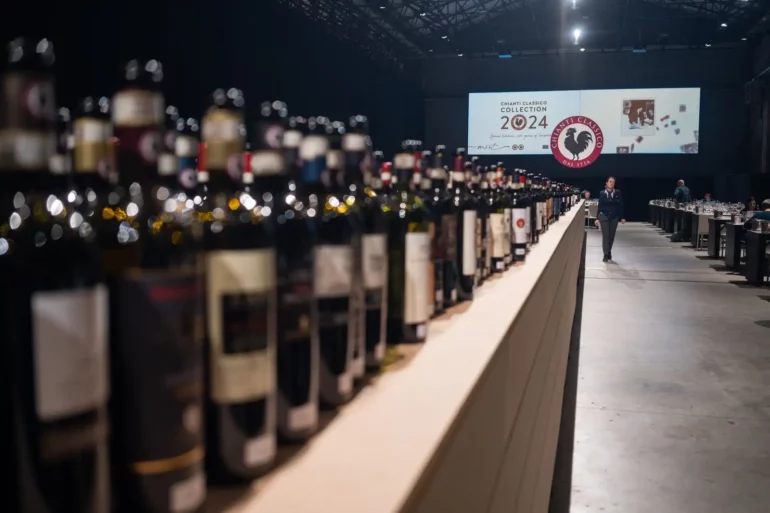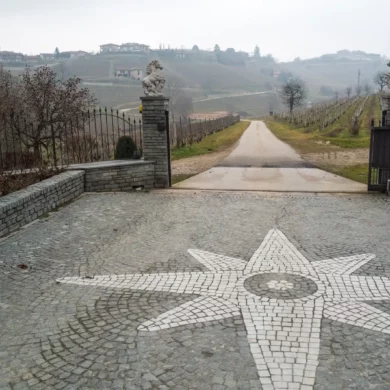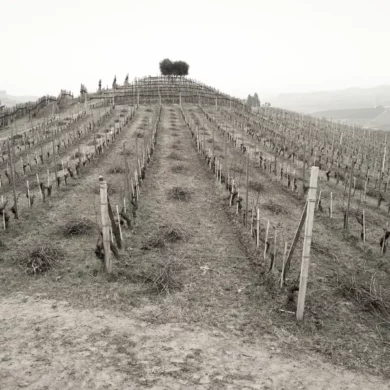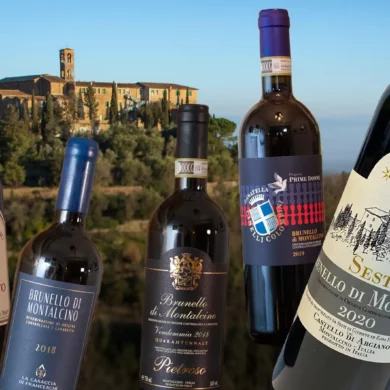Fresh off of a week-long series of tastings at the Anteprima di Toscana in Florence, Italy, our editor-in-chief Kevin Day spotlights his top 25 wines from Tuscany’s most vital and intriguing appellation at the moment: Chianti Classico.
Modern Chianti Classico
Right now, there is a very clear focus on what this place is and how its wines ought to taste.
What kind of wine do you want to be? This question may sound more like the start of a psychotherapy session than a tasting report, but it was something I kept thinking about over two days of tasting at the 2024 Chianti Classico two weeks ago.
With wine, identity starts and ends with the gifts of natural terroir. However, in between the grape and the glass, people have a way of imposing stylistic considerations and unnecessary barriers that can gunk up that vision. The larger the area, I’ve found, the more likely it is that the identity will be muddled.
Which makes this current chapter in the long story of the Chianti Classico DOCG so compelling. Right now, there is a very clear focus on what this place is and how its wines ought to taste, which hasn’t always been so clear for the land of the Black Rooster. Increasingly a varietal wine — with international grapes being shed quickly from the few cuvées that remain — Chianti Classico is a wine predicated on elegant acidity, cotton-like tannins and four pillars of flavor that fluctuate from producer to producer: red fruits, something savory, an intriguingly bitter-herbaceous element and a sharp cut of citrus.
How This Tasting Worked
Whenever I taste Chianti Classico these days, I zero in on these elements and how well balanced they are, and as a result, you’ll see those words repeated a lot in the descriptions below. From there, judging these new releases was a matter of gauging intensity, openness, persistence, compatibility to occasion and most of all, personality.
Of the roughly 125 Chianti Classico wines I tasted, these 25 rose to the top and are worth seeking out as they hit store shelves here in the United States.
Please note that the vintages vary here for two reasons: First of all, some producers decide to hold back their wines to allow them a bit of additional aging before release. Secondly, we were given the opportunity to taste very young, soon-to-be released wines that have only recently been pulled from the barrel, as well as current releases. What follows is a mix, but they’re all relevant to what you’ll find on the shelves as 2024 chugs along.
When the dust settled, I found that the three wineries whose wines showed best across the board were Istine, Villa Calcinaia, and Castello di Monsanto.
Estates I’ll have to keep an eye on because of their enormous promise include Piemaggio, I Fabbri, Nittardi, Vecchie Terre di Montefili and Rocca di Montegrossi.
Classics like Monteraponi, Fontodi, Poggerino and Badia a Coltibuono also faired well.
Navigate to Chianti Classico Categories
- Chianti Classico – 9 wines
- Chianti Classico Riserva – 6 wines
- Chianti Classico Gran Selezione – 10 wines
Navigate to Each Wine
-
- Arillo in Terrabianca 2020 “Poggio Croce” Chianti Classico Riserva 2020
- Carpineta Fontalpino 2019 “Vigna Montaperto” Chianti Classico Gran Selezione
- Castell’in Villa 2019 Chianti Classico
- Castello di Monsanto 2020 Chianti Classico Riserva – Top Riserva
- Castello di Monsanto 2019 “Il Poggio” Chianti Classico Gran Selezione
- Castello di Volpaia 2020 “Coltassala” Chianti Classico Gran Selezione
- Fattoria Pomona 2020 Chianti Classico Riserva
- Fontodi 2021 Chianti Classico
- I Fabbri 2021 Chianti Classico
- Istine 2020 Chianti Classico “Levigne” Riserva
- Istine 2021 “Vigna Casanova dell’Aia” Chianti Classico Gran Selezione – Top Gran Selezione
- Le Cinciole 2019 “Aluigi” Chianti Classico Gran Selezione
- Monteraponi 2022 Chianti Classico – Top Chianti Classico
- Monteraponi 2019 Chianti Classico Gran Selezione
- Nittardi 2021 “Belcanto” Chianti Classico
- Nittardi 2020 Chianti Classico Gran Selezione
- Piemaggio 2020 “Le Fioraie” Chianti Classico
- Piemaggio 2019 “Le Fioraie” Chianti Classico Riserva
- Poggerino 2021 “Nuovo” Chianti Classico
- Rocca di Montegrossi 2021 Chianti Classico
- Tregole 2019 Chianti Classico Gran Selezione
- Vecchie Terre di Montefili 2019 Chianti Classico Gran Selezione
- Villa Calcinaia 2021 Chianti Classico
- Villa Calcinaia 2020 Chianti Classico Riserva
- Villa Calcinaia 2020 “Vigna Bastignano” Chianti Classico Gran Selezione
Note: Wines marked with the “Requires Some Searching” icon () have production levels below 25,000 bottles.
Chianti Classico
The annual-release wines (known simply as Chianti Classico) represent the largest category by volume, and as a result, they are the most affordable. They also have the least amount of aging, and the most open regulations for vinification and blending, such as the optional allowance of Cabernet Sauvignon and Merlot in small but impactful percentages. That said, I hesitate to call these wines “entry level” because they are often so delicious and pure — for some wineries, they are even the best transmitters of subzone terroir, not unlike a village-level Burgundy.
Wines from this category are also the most versatile at the dinner table, and can often be consumed on their own without needing foods to cut through tannin.
Per the regulations: A minimum of 80% Sangiovese and a maximum of 20% other permitted red grapes (international and/or indigenous). Must be aged for 12 months, with no oak requirements and a minimum alcohol of 12% ABV.
TOP WINE: 2022 Monteraponi Chianti Classico
Monteraponi’s Michele Breganti is one of Chianti Classico’s most talented and outspoken winemakers. From his village-like property nestled on a ridge extending southwest from Radda, he has forged a reputation as one of most refined winemakers in all of Italy. I’ve had his wines before, but never have they made more sense than they did at this year’s Chianti Classico Collection. I am featuring the 2022 Chianti Classico (★★★★★) here because it was the best of the category, with heightened peppery, savory aromatics that demanded attention. Underneath the surface, though, was a complex range of Sangiovese’s primary flavors complemented by subtle sassafras and juniper berry-like notes. Superb persistence and chalky mineral tannins suggested that this wine could age for decades. “What a wine. Brilliant and complete,” I wrote in my notes.
2021 Villa Calcinaia Chianti Classico
Every time I encounter Sebastiano Capponi’s wines, I am impressed. In fact, his Villa Calcinaia estate is listed here three times, making him the “winner” of this year’s Chianti Classico Collection with three five-star wines at each level.
The 2021 Chianti Classico (★★★★★) is simply gorgeous. I started my notes with “hot damn this is good” because I was stumped for any other words. It is supremely elegant, and as close as this category of wines came to any Burgundian ideal (even more so than Monteraponi, who always gets that label slung at it). Don’t get me wrong: this does not imposter a Pinot, but you’ll want that kind of stemware to fully appreciate it’s sleek lines, lean and bright fruit, and supremely balanced Sangiovese elements suggestive of cherries, citrus, savory and herbs.
2021 Fontodi Chianti Classico
At times, it can seem like Fontodi is Panzano (the idyllic village situated on a saddle in the heart of the zone). Other times it seems like Panzano is Fontodi. This estate, with its towering reputation, continues to play a vital role in the future of the DOCG in part because Giovanni Manetti is the current President. His wines, including this one, need age to show their best.
In Fontodi’s Chianti Classico we find a technically correct ambassador of what this zone’s wines ought to taste like vintage after vintage. The 2021 (★★★★★) is even more exquisite than most years: so wild and feral with its savory attributes, yet measured and precise with the fine cherry-fruit notes and woody herbaceousness. This, combined with a superb persistence on the palate, translates into a wine that will inspire you to fire up the grill and start cooking.
2019 Castell’in Villa Chianti Classico
Don’t let that three-year gap fool you: this 2019 (★★★★ 3/4) is the current release from Castell’in Villa. Like Monteraponi, Castell’in Villa does things their own way, with holding back the release of vintages front and center to their strategy. This wonderful Chianti Classico is fabulously wild with its herbal aromatics and wild streaks of savory character. It does not play down the middle; rather it exudes a free spirit. There are some richer notes to this wine as well — that recognizable, “solar” fruit is a trait of Castelnuovo Berardenga’s warmer climate and prevalence of clay. The herbaceousness carries through from the aromas to the palate and the finish, giving this wine heightened complexity that isn’t often found at the standard Chianti Classico level.
2021 I Fabbri Chianti Classico
Chianti Classico is now divided in 11 UGAs — think of them as communes with their own distinct terroir and winemaking culture. While these distinctions are only allowed on the label under certain circumstances with the Gran Selezione (beginning in 2020), they can effectively frame your expectations in a few key zones. This is perhaps no more true than in Lamole, which has the highest elevation and yields the leanest and most subtle of Chianti Classico wines.
I Fabbri is a great starting point for exploring this zone. I tasted this wine at the Chianti Classico Collection amidst a few peers from other UGAs, and it felt like listening to a piano concerto while your teenage son blasts his speakers in the room next door. My mistake: Lamole needs to be assessed on its own, because only then can you sense its featherweight, ethereal beauty.
Fortunately, I followed the event with a day visiting three estates across the region, I Fabbri among them. Winemaker and proprietor Susanna Grassi poured the 2021 Chianti Classico (★★★★ 3/4) and I was fully immersed in the falsetto voice of the place. With its bright red cherries, pomegranate and sweet strawberries, the wine shows Lamole is all about: a complexity of fruit. Hailing from the highest vineyards in all of Chianti Classico, this 100% Sangiovese wine lends a different perspective that is less about meaty and herbal flavors, and more about minerality and a tinge of intriguing bitterness.
2020 Piemaggio “Le Fioraie” Chianti Classico
This was my first time tasting the wines of Piemaggio, and I thoroughly enjoyed their lineup. The 2020 Chianti Classico (★★★★ 3/4) is a blend with Canaiolo, Ciliegiolo and Colorino comprising a combined 10% of the wine. It was tasted alongside a “natural” flight of wines, as I selected six producers known for their minimalistic approach to see how they stacked up.
Far and away, “Le Fioraie” had the deepest nose, the densest fruit, and the most complexity of this particular round. There is a saline-like minerality to this wine which is heightened by tones suggestive of tobacco leaf, peppery spice and herbs. It is a substantial non-Riserva, non-Gran Selezione Chianti Classico with an ample degree of tannin that feels like smooth cotton on the finish. Even more impressive was the 2019 (★★★★★), tasted at their table, but which is not the current release (so not included here). With that extra year of age, the minerality really shines, and the aromas are all-the-more luscious.
A promising winery that I will be keeping an eye on in future years.
2021 Nittardi “Belcanto” Chianti Classico
Nittardi’s claim to fame has long been its connection to Michelangelo, who owned the property in the 16th century and whose face is gazing out from the label of this wine. Upon recommendation from one of our subscribers, I sought them out at the Chianti Classico Collection this year and was massively impressed with their unique, character-driven wines.
Their 2021 Chianti Classico (★★★★ 3/4) is meaty in a big way, with seemingly iron-infused cherries and juniper berries showing on the potent nose. On the palate, that savory trait is pronounced, and its coming purely from the Sangiovese and its vineyard, not the cellar (note that this is a blend with 10% coming from a mix of Canaiolo, Colorino, Malvasia Nera, Ciliegiolo, Mammolo, Foglia Tonda and Pugnitello). Elegant and supple, with mineral touches and sleek, active, cotton-like tannins, I was wowed with this wine. See also their entry under Gran Selezione below.
2021 Rocca di Montegrossi Chianti Classico
The Ricasoli family is the most famous in Chianti Classico. After all, it was Baron Bettino Ricasoli who pioneered the Chianti blend in 1872 which would eventually give rise to the Consorzio and the Black Rooster label in 1924. Today, they’re most closely affiliated with Ricasoli and Castello di Brolio, but there is another Gaiole estate with Ricasoli ties — Rocca di Montegrossi — which is overseen today by Marco Ricasoli-Firidolfi.
The estate’s 2021 Chianti Classico (★★★★ 3/4) shows a great deal of promise from the very get-go with a beautiful nose suggestive of black cherry and rosemary. On the palate, the wine is elegant, harmonized and distinctive with softer cherries, pleasant and mellow acidity and a finish that’s mineral and bright. Among the more agile and versatile wines tasted at this year’s Collection.
2021 Poggerino “Nuovo” Chianti Classico
During my 2022 visit to Chianti Classico, I visited with Piero Lanza at Poggerino and enjoyed one of the best tastings of my career. A meticulous and highly intelligent winemaker, Lanza is unafraid to experiment, as reflected by this second Chianti Classico (★★★★ 3/4) of his, which is raised entirely in concrete eggs, a vessel that allows the wine to perpetually circulate and stay active throughout the fermentation.
With the 2021, “Nuovo” bursts with bright and mineral fruit, savory highlights and the estate’s signature blood-orange acidity. The tannins are already well integrated — a sort of soft cotton T-shirt to put on at the end of the day — while the wine’s juiciness leads to a persistent finish.
Chianti Classico Riserva
Don’t think too hard about the purpose of the Riserva category of wines. While on the surface this may seem to be a purgatory category on the “quality pyramid” — neither here nor there — Riserva does play an important role for many estates.
For one, some estates do not have the means to produce and store a single-vineyard wine, particularly smaller or newer wineries. For them, the Riserva category gives them a chance to sell a structured wine meant for longer aging. There are also a few estates who want to prove that you can make a structured, age-worthy wine with more than 10% non-Sangiovese grapes in their wine, as this category allows for up to 20%. Still others want to blend multiple plots from across various terroir, which doesn’t fit into the ethos of Gran Selezione.
What follows are structured, well-balanced wines intended for grander meals and longer cellar aging.
Per the regulations: A Riserva must be a minimum of 80% Sangiovese and a maximum of 20% other permitted red grapes (international and/or indigenous). Must be aged for 24 months including 3 months in bottle, and while most are oak-aged, there are no requirements of type of barrel or length of aging. Chianti Classico Riserva must be 12.5% ABV or higher.
TOP WINE: 2020 Castello di Monsanto Chianti Classico Riserva
Castello di Monsanto actually produces more of their Chianti Classico Riserva each year than their Chianti Classico — the latter of which they don’t even export to the United States. For an estate that has built its legacy on aging wines — something I’ll be reporting on in a few weeks — the Riserva naturally works as their “business card” introduction to how they showcase their terroir in San Donato in Poggio.
With the 2020 Chianti Classico Riserva (★★★★★), that shines brilliantly through an impressive depth and purity of black cherry-meets-dark strawberry fruit that is countered with a citric persistence most closely akin to tamarind — unlike any other Chianti Classico I’ve tasted. It is wonderfully expressive and deep, with baking spice edges, a very fresh palate presence, racing acidity and lean, cotton tannins with good grip. It is the kind of wine that shows equal amounts of prowess from nature and the winemaker. The 2020 vintage is just one of many great vintages within the remarkable continuity of this estate.
2020 Istine Chianti Classico “Levigne” Riserva
Angela Fronti’s Radda winery is on an impressive role right now. She’s made the pages of the NY Times (a few times), and her wines are now displayed front and center on wine shelves and wine menus from coast to coast in the United States. Her wines, like those from the Lamole UGA, underscore Chianti Classico as a mountaineous region: they have a briskness and freshness that can only come from high-elevation and rocky ground. But its the complexity, tension and overwhelming beauty that she is able to coax from her vines that makes Istine such a standout.
With success has come a shift in her lineup. When I met her last, her single-vineyard wines were at the Chianti Classico entry-level. Now, she has the resources to transition at least one of them to Gran Selezione, which put her former “top wine” — “Levigne” — in a different space. This is where its important as a consumer to not overlook Riserva wines, for Levigne is still a selection of choice fruit from three of her vineyard sites and it is aged 36 months before release. However, those vineyards are in both Radda and Gaiole, so this dual-village blend — while every bit as age-worthy and structured as her Gran Selezione — will stay at the Riserva level.
And the 2020 Riserva (★★★★★) is stunning. It leads with an enticing line of savory aromatics through the middle, which is then supported by radiant and vivid cherry fruit, taut grapefruit-like acidity and the subtle grace of herbaceousness which lends depth. Beautifully focused and balanced with already-silky tannins, this wine seems to waltz across the palate with ease.
2019 Piemaggio “Le Fioraie” Chianti Classico Riserva
Back to Piemaggio, whose wines I’ll be pursuing from now on. This small Castellina in Chianti estate does not yet have a Gran Selezione, so the Riserva acts as the top wine and likely will for some time. (This is a case where calling the categories a “pyramid” is a disservice to consumers). Furthermore, the estate takes the word “riserva” seriously enough to only produce this wine in great years, as it should be on purely philosophical grounds. When the conditions don’t meet their standards, the top-parcel juice benefits the annata Chianti Classico.
The 2019 Riserva (★★★★★) was among the most beautiful and elegant Riserva wines I tasted — “outrageously beautiful on the nose” I wrote as a first impression. “Possibly my favorite aromas of the day.” The reason for that was nothing out-of-the-ordinary, just Sangiovese’s pure fruit-mint-meat-citrus character all coming together in perfect harmony. On the palate, the 2019 is already supple, elegant and gracious — a generous wine — with slatey tannins and traces of juniper berry on the long finish.
Piemaggio also produces a very nice Bordeaux-style IGT wine (★★★★ 3/4) that provides Sangiovese’s tempo, Cabernet’s spice and Merlot’s caress.
2020 Villa Calcinaia Chianti Classico Riserva
Sebastiano Capponi’s 2020 Riserva (★★★★★) had me swooning as well. Tasted immediately after his sterling 2021 Chianti Classico (see above), the wine made even more sense than when I tasted it against a flight of other riserva wines. In both cases, it is a standout, but alongside the other Villa Calcinaia wines, it reveals more intense and bigger aromas and flavors, as well as a pure line of peppermint-like herbaceousness that lends stature. While this estate never shies away from bitter and sour peripheral fruit tones, nor from Sangiovese’s high acid/high tannin disposition, there is still a softer demeanor and amiable character to this wine that feels like the best of both worlds.
A tremendous winemaker who rarely finds himself in the spotlight, but should.
2020 Fattoria Pomona Chianti Classico Riserva
Last month, I wrote an Opinionated Guide to Reading an Italian Wine Label, and offered the pro-tip to look for the Vignaioli Indipendenti (FIVI) logo on the neck or back label as a sign of quality. Taking my own advise, I snooped out this winery in Castellina in Chianti and talked with owner/winemaker Monica Raspi, who is also on the board at FIVI.
Her standout wine was the 2020 Riserva (★★★★ 3/4) as well as a 2007 vintage (★★★★★)— her first vintage — which she was pouring for a lucky few from her stand. The 2020 had a nice integration of mineral-meets-menthol aromas, which were very clearly defined on the nose, as well as traits of black cherry and petrichor. On the palate, this sleek and balanced wine offered fairly silky tannins and a dark, brooding finish. It is a thoughtful wine, and having tasted the leathery, herbal and citric 2007, I can see a promising future for the wine if it were to be laid down for another 15 years.
2020 Arillo in Terrabianca “Poggio Croce” Chianti Classico Riserva
As with the using the FIVI logo to guide my curiosity, I also use the Slow Wine Guide every now and then to snoop out new producers. Their ethos aligns with mine, and their boots-on-the-ground editors are ahead of the curve in a way that Wine Enthusiast, Wine Spectator and many other commercial critics never are.
That’s what led me to Arillo in Terrabianca, a rather ambitious estate that will be joining Slow Wine’s U.S. tour in March. A rather new endeavor owned by a Swiss-Italian family, they have nonetheless produced a line of wines that I found expressive and refined — they certainly belong at the table with their contemporaries. At first, the 2020 “Poggio Croce” Riserva (★★★★ 3/4) was subdued on the nose, with typical Chianti Classico tones with just a hint of blue fruit and resinous herbs like rosemary as well. On the palate, it shows its roots in Radda with a lithe texture, racy acidity and fine-grained tannins. I’ll be curious to chart the trajectory of this estate.
Chianti Classico Gran Selezione
Just two years ago, it seemed to me that the Gran Selezione category was trending towards living up to its promise. The era of “more is better” was on the wane.
That appears to be mostly in the past now: Gran Selezione has found its form, and increasingly these really are the best wines coming from the DOCG. Just note that six out of the 10 wines I’m profiling here earned my top-tier ranking of ★★★★★.
What accounts for this rise? In some ways, it was because of new entrants to the Gran Selezione category. Undoubtedly, the category improves when the likes of Istine and Monteraponi join the fray. But furthermore, there is a real commitment across the region to make a wine that tastes like it comes from this unique place, rather than just another technically perfect, internationally styled wine that could be from anywhere. Even the larger wineries — notably Ricasoli and San Felice — are aiming in this direction, and while I’d rather recommend the smaller, independent wineries here (because I find their wines more compelling and distinguished in the glass), this movement will better serve Chianti Classico because those commercial wines have tremendous reach. Increasingly wine drinkers will not only look to Chianti Classico for fine wine, but for a fine wine on Chianti Classico’s terms. To have the larger commercial wineries carry that banner is a good thing, and a sign of unity from the appellation.
Right now is a great time for consumers to load up on these wines. Very few Gran Selezione crack the $100 barrier, which cannot be said for Brunello di Montalcino or Barolo. Obviously, those are different wines with different profiles, but the overriding value of Chianti Classico and its top wines should not be ignored.
Per the regulations: A minimum of 90% Sangiovese and a maximum of 10% indigenous grapes (most Gran Selezione are 100% Sangiovese, however). Must be grown and bottled at the estate either from a single-vineyard or a selection of the best grapes. Aged for 30 months including 3 months in bottle, with an alcohol level at or above 13%. Again while most are oak-aged, there are no requirements of type of barrel or length of aging.
TOP WINE: 2021 Istine “Vigna Casanova dell’Aia” Chianti Classico Gran Selezione
This wine confirmed for me that Angela Fronti is here to stay. Making its debut as a Gran Selezione with the 2021 vintage, “Vigna Casanova dell’Aia” (★★★★★) is everything I love about Chianti Classico: dashing splashes of fruit augmented by peppercorn-savory and light botanical elements, a line of sharp-orange citrus-like acidity to keep things moving, and an overall disposition that recalls the mountains and forests of its rugged landscape. This wine tastes like its from somewhere, and that somewhere is a place you want to be when you taste the wine. All the while, it is as supple and elegant as most anything you could pour from Barolo, Burgundy or Sonoma.
Just two years ago when I tasted this wine with Fronti at her estate, it was filed under the Chianti Classico category — a rare single-vineyard “annata.” Had the regulations for Gran Selezione mandated more time in oak, rather than just more time aging, we’d have a very different wine. Fortunately, they only mandate 30 months with a minimum three months in bottle, giving thoughtful winemakers like Fronti the latitude they need to realize their vision.
2019 Monteraponi Chianti Classico Gran Selezione
Two years ago, when I met Michele Braganti at this winery, I asked whether he’d be releasing a Gran Selezione in the future. His main hangup at the time was that the regulations did not call for 100% Sangiovese. With that, he suggested, the blended wines — even with indigenous varieties — could not match the ideal of what he thought a Gran Selezione could be.
Naturally, Braganti’s station was swamped with revelers this year, and I unfortauntely ran out of time to ask him what changed in his heart. But here we are: the 2019 vintage has a Gran Selezione from Monteraponi (★★★★★), and what a wine it is. (Although I should note only 1,333 bottles were made).
On the nose, it conveys a tinge of anise-seed bitterness that grounds you in Tuscany, with inviting tones of sassafras and tobacco leaf complementing Sangiovese’s usual black-cherry fruit and meaty savoriness. The depth of fruit aromas at Monteraponi are always impressive, and this is no exception. The tannins feel surprising with their lean, finely etched lines — you can’t make a wine like this by mistake. A stunning wine which justifies the hype surrounding this highly sought-after winemaker.
2019 Castello di Monsanto “Il Poggio” Chianti Classico Gran Selezione
The Gran Selezione category was made for wines like “Il Poggio” — a proven single-vineyard wine with a legacy of consistency and a singular voice whereby the word “riserva” just doesn’t cut it.
Il Poggio’s reputation is in rarified territory among its peers, yet as a testament to the value of Chianti Classico compared to Brunello di Montalcino and Barolo, this wine — one of the most famous and sought-after in the region — is still priced under $100.
Il Poggio delivers on its singularity year-after-year on two fronts: a clear citrus-zest note on the nose, and a saline minerality on the finish — both traits are fairly unique in the way they assert themselves. In between those bookends, the 2019 Il Poggio (★★★★★) gives drinker a beautiful juxtaposition: it is at times playful, yet dignified throughout as well. The wine’s compact but delicate tannins hold Il Poggio’s shape in a beautifully functional way. It is not an aromatically explosive wine, but its beauty and harmony have a gracefulness all its own.
2020 Castello di Volpaia “Coltassala” Chianti Classico Gran Selezione
After the Chianti Classico Collection, my first estate visit was in the tiny village of Castello di Volpaia, where the Mascheroni-Stianti family loving cares for their wine estate and the village, which are so intertwined, they feel one and the same.
Halfway up the hill to the village, you pass by the Coltassala vineyard, where this 95% Sangiovese and 5% Mammolo blend hails from. Mammolo is a lightly flavored grape, so its use is really only for color. However, it has a nice alchemy with Sangiovese, and does not take away or dilute its character in any noticeable way. Why use it? “More for fun than anything,” Federica Mascheroni-Stianti said casually.
The Sangiovese in this lovely and very refined 2020 Gran Selezione (★★★★★) offers a little pomegranate- and plum-like accent to complement the core Chianti Classico black cherry, herbs and citric touches that are familiar. This wine certainly skews more towards the herbaceous end of the spectrum, but with that lively acidity and beautifully controlled and measured tannins — a hallmark of Volpaia — I found this wine to be highly versatile given its bold structure. A taste of the 1997 Coltassala (★★★★★) — which was outside the Chianti Classico DOCG at the time and labeled as a Toscana IGT — floored me with its liveliness and complexity, and leads me to believe this vintage is prime for the long haul as well.
2020 Villa Calcinaia “Vigna Bastignano” Chianti Classico Gran Selezione
Villa Calcinaia has three different Gran Selezione to profile their three top vineyards: Contessa Luisa, La Fornace and Vigna Bastignano. While Contessa Luisa and La Fornace did well on my scorecard, the 2020 Vigna Bastignano (★★★★★) truly felt like a unique voice in a room of 500+ Chianti Classico wines. It really grabbed my attention at this tasting.
On the nose, the 2020 Vigna Bastignano is reminiscent of great Burgundy in the way it pulls you in without force or strength. There’s a fresh mint character, a two-step of peppercorn spice, savory traces and sleek cherries to lure you deeper, and a persistent mineral tone to propel each sip forward. The tannins are well integrated, seemingly lurking on the sidelines and waiting for their moment to be called into duty with a ribeye. A wine with nothing out of place.
2019 Vecchie Terre di Montefili Chianti Classico Gran Selezione
With the new UGA classification system, lovers of Chianti Classico can begin in earnest to decipher how Sangiovese expresses individual pockets of terroir. Or at least, we can try: there is still enormous variety and seemingly infinite variables that could influence what we get in the glass. And when similarities do arise, they can further confuse, rather than clarify.
Case in point, this wine from the promising Vecchie Terre di Montefili. I sensed a kinship between its softer, fleshier, herbal notes with Villa Calinaia’s “Vigna Bastignano” (one above). Chianti Classico often brings to mind resinous herbs, but could it be that in the Montefioralle UGA it registers differently?
After a little bit of digging, I discovered that Vecchie Terre di Montefili’s Gran Selezione (★★★★ 3/4) actually fits into the Panzano UGA, despite its proximity to the previous wine. A representative from the estate noted that their higher elevation vineyards are in Montefioralle UGA, and could be a separate Gran Selezione some day.
Oh well. In the end, these distinctions can feel like splitting hairs. What was important to note about the 2019 Gran Selezione from Vecchie Terre di Montefili was its mellower disposition. This was a grand wine to ease your way into, with beautiful elegance and length on the palate, and slightly softer tannins thanks to the additional year of aging.
2019 Tregole Chianti Classico Gran Selezione
Part of the thrill of attending the Chianti Classico Collection is how it encourages exploration and as a result, reveals producers that have been hiding in plain sight for years. Wine writers talk, as do winemakers, and throughout the fair, I found several instances where I was tasting an estate I’d never heard of because someone recommended it.
In the case of Castellina in Chianti’s Tregole, that recommendation came from Angela Fronti of Istine, who introduced me to her friend — and rock climbing partner — Sophie Ginevra Conte. I opted to taste her wines in the sommelier-led service area for press so I could tune out the noise, and I was duly impressed, especially with the 2019 Gran Selezione (★★★★ 3/4). Infused with tones suggestive of black cherry, kirsch and rosemary, the wine also had plenty of savory muscle. A pure line of citrus acidity through the middle resembled blood oranges, and while the textures were a little more plush than most Chianti Classico (a trait of Castellina in Chianti, from my experience), there was nonetheless a nice line of minerality to keep the wine moving and to invite a second sip. This is certainly a wine that needs plenty of oxygen — or another five years of aging — to spill its secretes.
However, I have to note, it is in extremely limited production, with only 900 bottles made. But I am listing Tregole anyways because of the potential I see in the estate.
2020 Nittardi Chianti Classico Gran Selezione
Nittardi’s 2020 Gran Selezione (★★★★ 3/4) lent even more dimension to the conversation about Chianti Classico: this time, there seemed to be a faint cocoa rasp to the voice, possibly from barrique- and tonneaux-barrel aging (a tech sheet was not available at the time on this new wine, but Nittardi does use these types of barrels in their Riserva).
Look, sometimes a leather jacket looks natural on someone. And sometimes a wine can “wear” oak with ease. The additional oxygen gives the wine space to maneuver, to open up more easily, and that subtle cocoa tone here complemented — rather than hindered — the pure Sangiovese fruit on display. This wine leans more toward fruit and resinous juniper notes than anything on the savory spectrum. Enticing and balanced, with a little bit of plushness that you consistently find in Castellina in Chianti, this was an easy-to-love wine.
2019 Le Cinciole “Aluigi” Chianti Classico Gran Selezione
Another wine that debunks myths about small oak barrels is Le Cinciole’s 2019 “Aluigi” Gran Selezione (★★★★ 3/4). This is a wine that artfully navigates subtlety and transparency of flavor with the core identity of Sangiovese: you can still recognize the varietal, the sense of place in Panzano, and the potential for more revealing details in the future. Slightly skewing toward more of a plum fruit tone — with an herbaceous element recalling church incense — this wine stood out to me for the precise tinge of iron in its savory dimension. For a Gran Selezione, it is quite subdued and more elegant than robust.
2019 Carpineta Fontalpino “Vigna Montaperto” Chianti Classico Gran Selezione
Minerality is a trait not often discussed with Chianti Classico, let alone Sangiovese wines, but thanks to the new terroir-focused ethos of things in the region, it is interesting to sense this “stony character” in myriad ways.
In the southern reaches of the DOCG you’ll find Carpineta Fontalpino, where this gorgeously elegant 2019 Gran Selezione (★★★★ 3/4) comes from. Boasting a superbly mint-forward character on the nose with nice swirls of cherry- and raspberry-like fruit, this wine stood out to me for its momentum. The acidity steadily leads you forward, while the stony tannins beg for another sip. Already those tannins are quite elegant and focused, leading to a wine that is as versatile as any Gran Selezione I tasted.

Support Opening a Bottle
This Tasting Report has been made public thanks to our Professional Subscribers, which includes the Consorzio Vino Chianti Classico. Making our comprehensive, context-rich Tasting Reports free to the public is a benefit of such a subscription, as is a custom landing page.
View our other Tasting Reports behind the paywall, and consider an individual or group professional subscription to read all of our wine reviews, attend any of our live and recorded classes, and access our curated list of the best producers in Italy.
All photos: ©Kevin Day/Opening a Bottle (cannot be republished without written permission)
Note: My participation in the Chianti Classico Collection and the Anteprima di Toscana events was made possible by the Anteprima di Toscana funding my travels, accommodations and meals as part of an EU program. All wines mentioned in this article were chosen by me, and the topic of this article was at my discretion as well. Learn more about our editorial policy.

